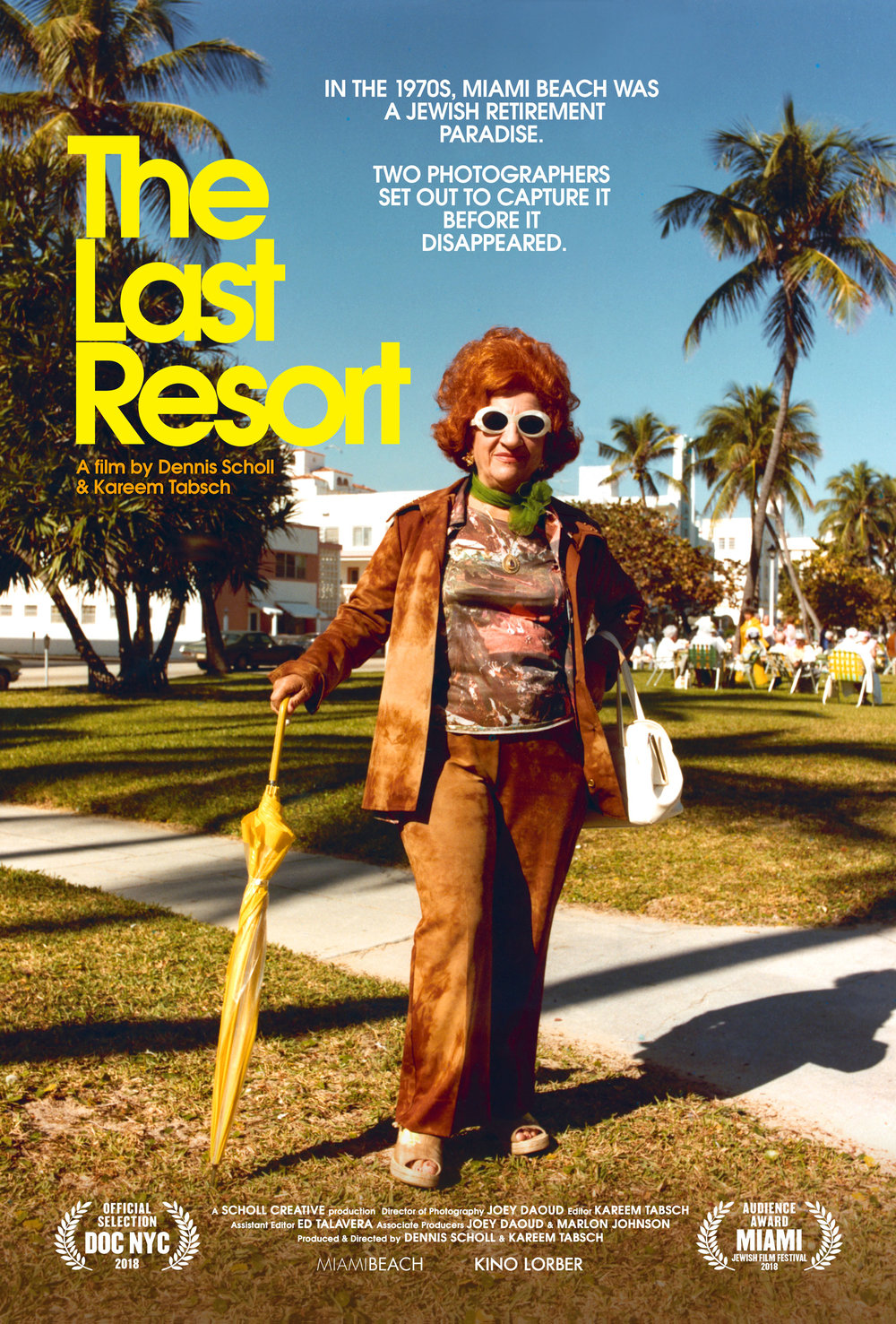By Sharon Autenrieth
The Last Resort – DVD Review
A Tribute to a Lost Community and the Photographers Who Documented It
It seems an unlikely pairing: two young post-college photographers and the elderly Jews of late-70s Miami beach. But the photographers, Andy Sweet and Gary Monroe, were drawn to the vibrant retiree community and the residents welcomed them as if they were their own grandsons. Sweet and Monroe, close friends but very different in their approach to their art, vowed together to document Miami Beach’s Jewish retiree population every day for ten years. They started in 1977 and presumably would have finished the project together if not for Sweet having been murdered in 1982.
With The Last Resort, directors Dennis Scholl and Kareem Tabsch have made a film that celebrates Sweet and Monroe’s work, explores their friendship and artistic rivalry, follows the tragedy and mystery of Sweet’s death, and also – by way especially of Sweet’s photos – brings to life a community long gone.
Gary Monroe is a formalist. His black and white photos of Miami Beach were carefully composed. Sweet, on the other hand, shot quickly and impulsively and produced pictures drenched in color. They captured the energy and joy of a people who had found their promised land, all the more precious for the struggles they’d been through – many of them having come to the U.S. as immigrants, refugees, and Holocaust survivors. In Miami Beach they soaked in the sun, enjoyed the nightlife, worshipped, fell in love – in short, the elderly Jews of Miami Beach lived the high life while it lasted. But it could not last forever. Rents skyrocketed and began to price out the elderly. As less new retirees moved in, the existing population continued aging and began to die off. The Mariel boat lift also complicated matters, bringing in many refugees but also some of Castro’s castoff criminals. The culture of Miami Beach changed radically in the ’80s, and the rising drug culture even played a role in Andy Sweet’s death. He’d gotten involved in drugs himself and investigators speculate that his murder was the result of a drug deal gone bad.
After Andy’s death, Gary Monroe pushed the Sweet family to publish his remaining photos quickly. The ensuing friction alienated Monroe from the Sweet family for years. To add to the tragedy, the art storage facility which housed Andy Sweet’s remaining work lost his entire portfolio in a move. Thankfully, almost miraculously, Sweet’s brother-in-law found a stockpile of contact sheets years later and has been meticulously restoring the photos for over a decade. This resurrected not only Sweet’s art, but the relationship between Gary Monroe and Andy’s family – allowing for a long overdue duel exhibit of Monroe and Sweet’s Miami Beach project.
Watching The Last Resort leaves a bittersweet aftertaste. That Sweet’s talent was cut off when he was only 28 years old is terrible. That all of those larger-than-life figures in the photos are long gone creates something like nostalgia, even for a place I’ve never been and a community of people I never knew. But in a culture in which we idealize youth and struggle to know how to age well, the sheer joie de vivre on display in Sweet’s photos is an inspiration. That he was able to bring those people so gloriously, vividly to life is a tribute to the power of Andy Sweet’s art.



